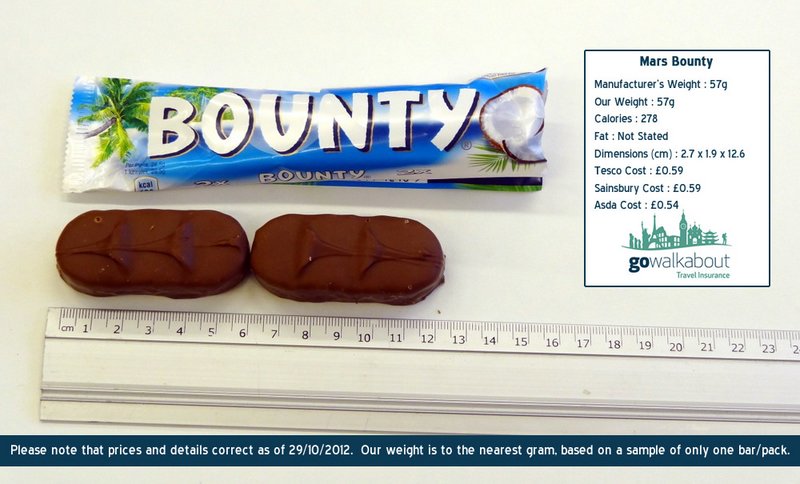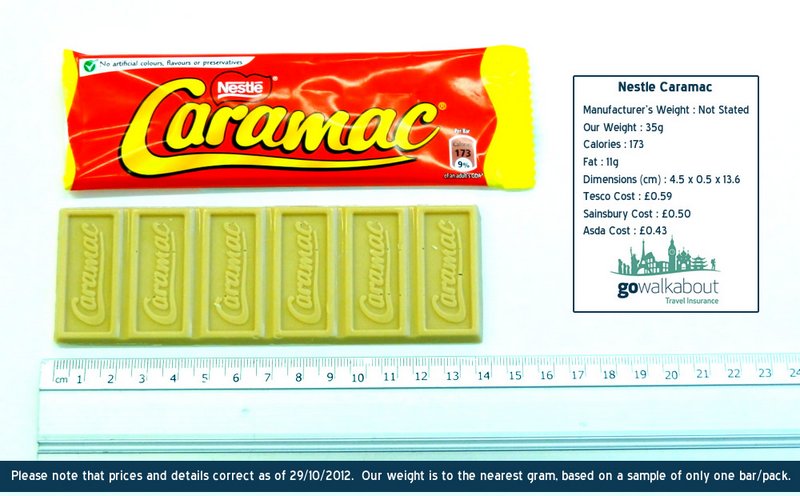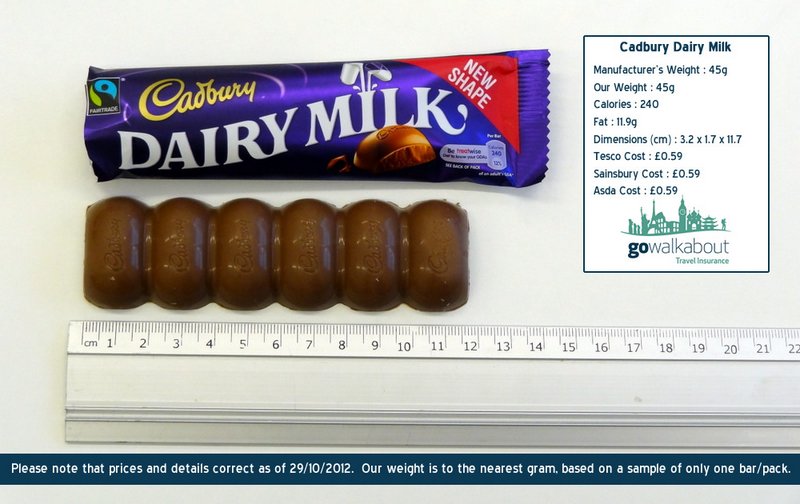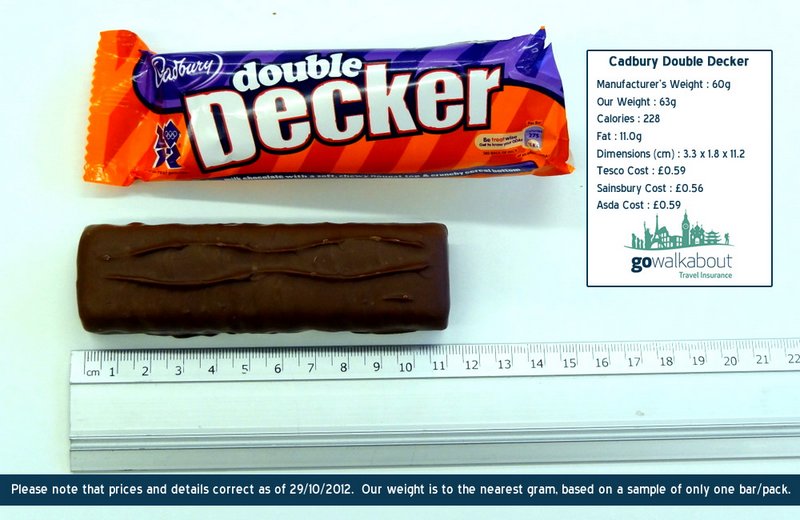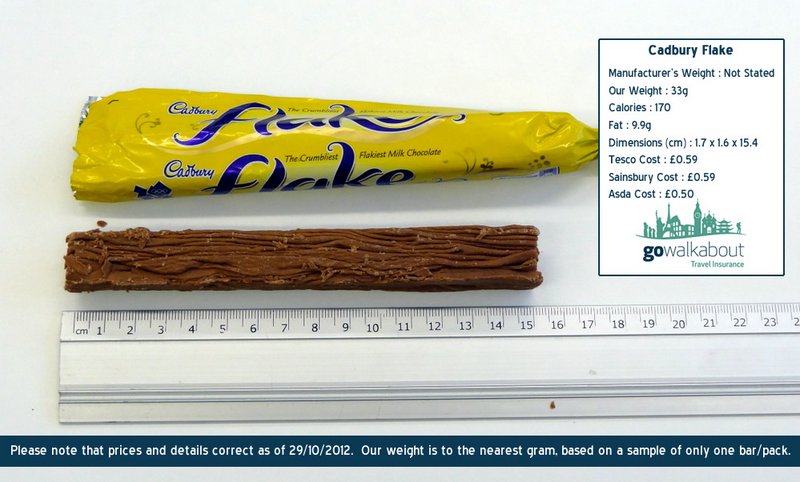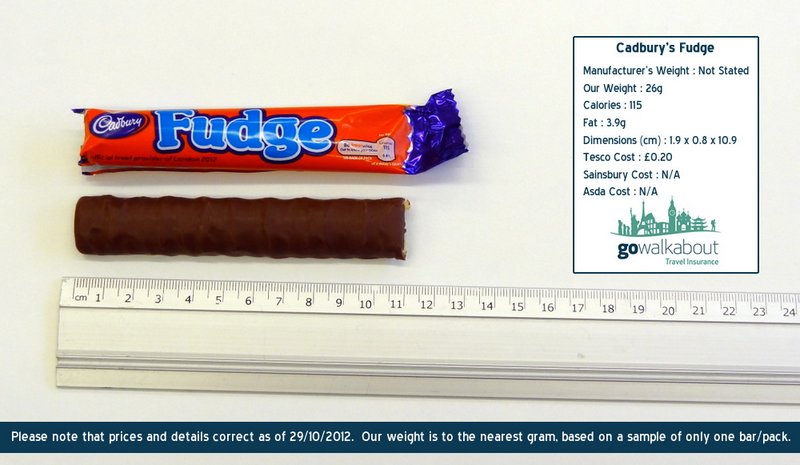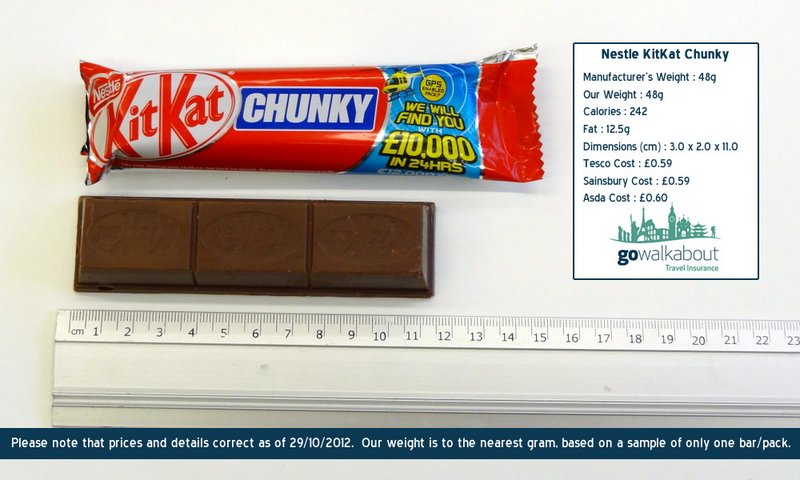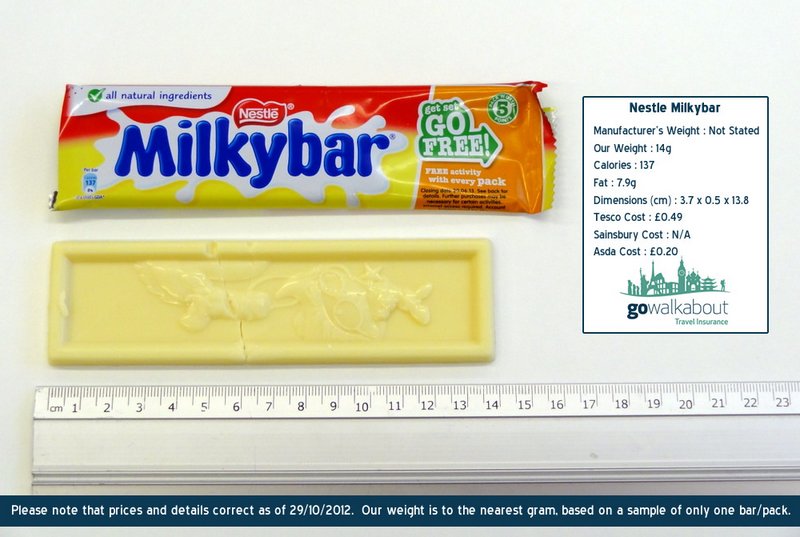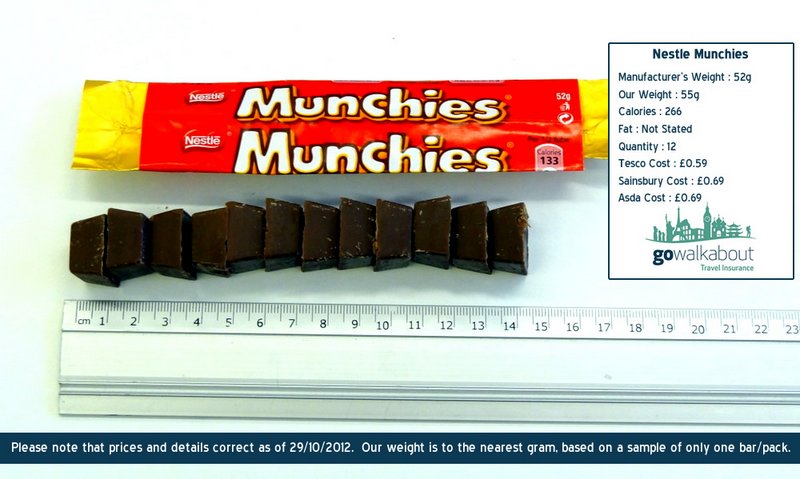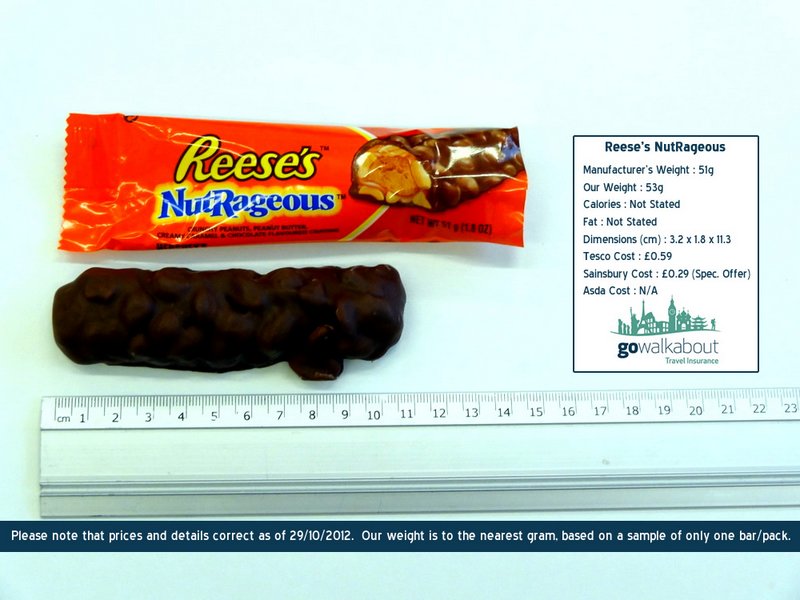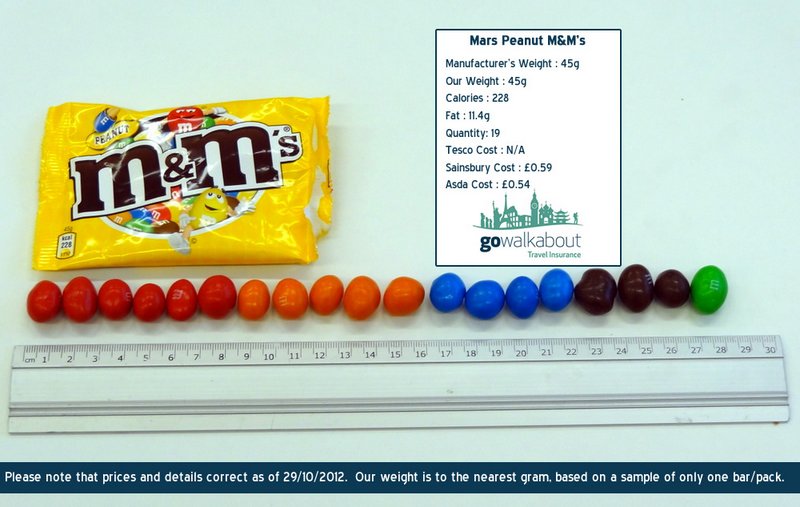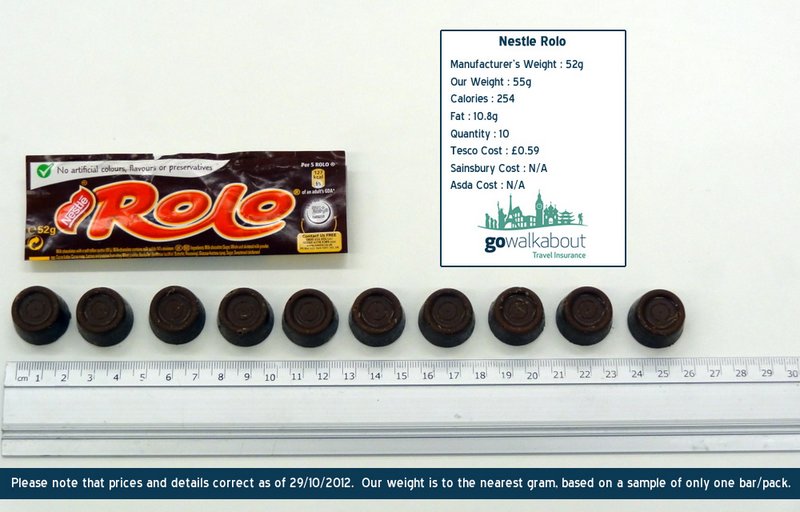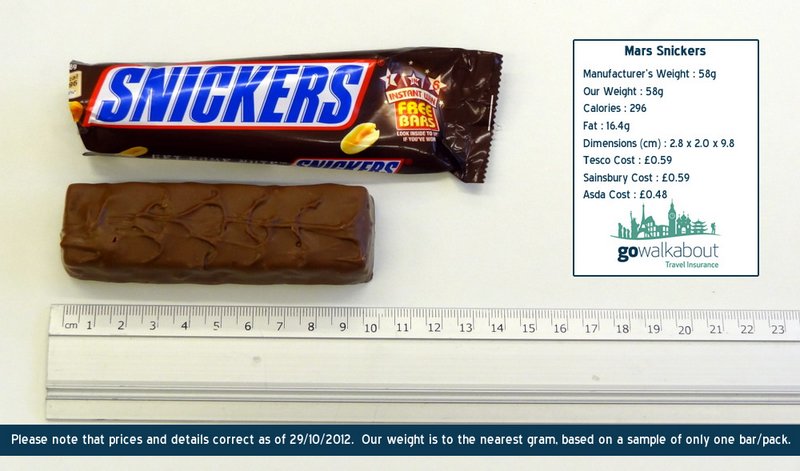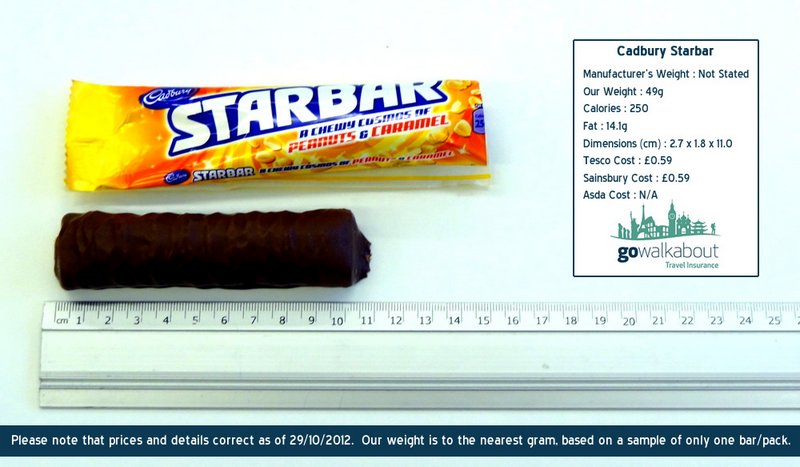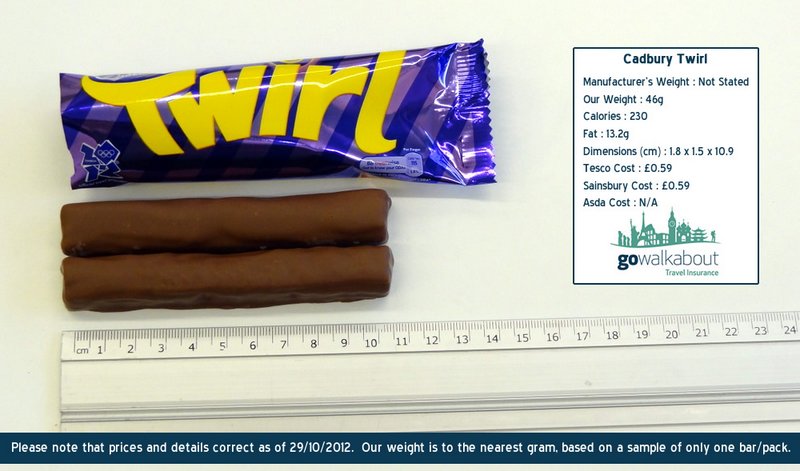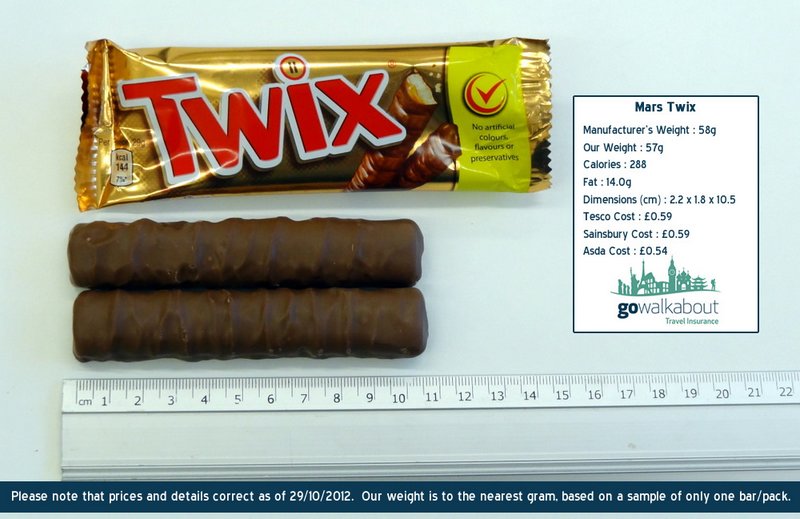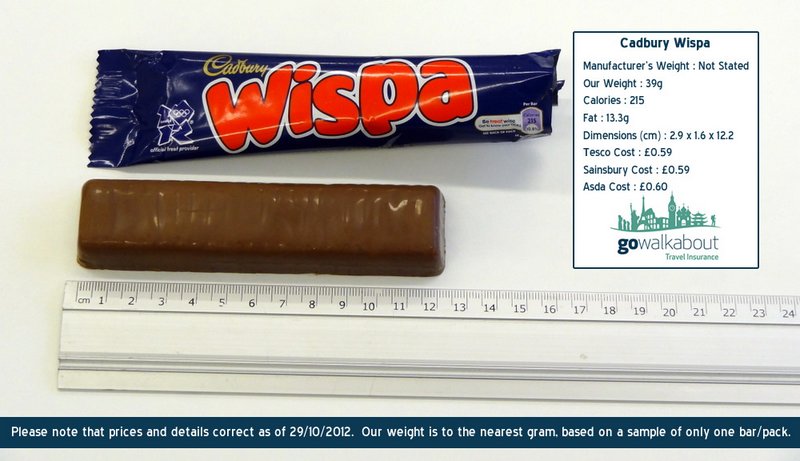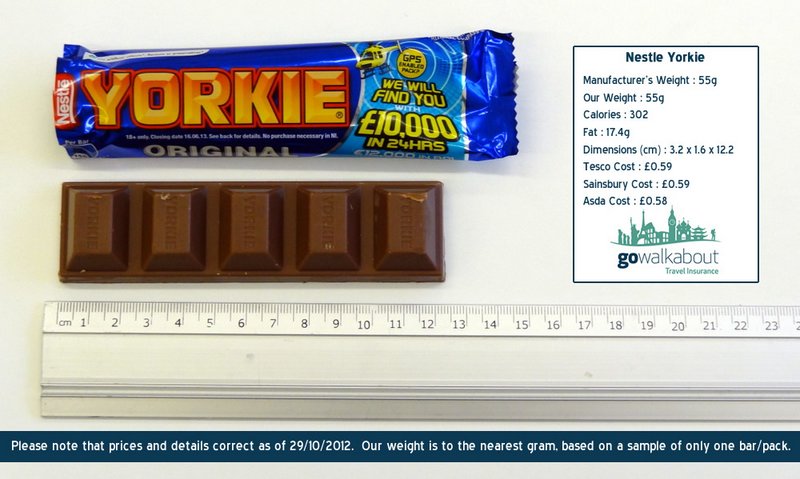News
The Grand Chocolate Survey 2012
10 December 2012
Click here for our 2016 Chocolate Survey to see how sizes have changed since 2012!
Chocolate is a serious business for us Brits, who are the seventh highest consumers of chocolate in the world, eating an estimated 660, 900 tonnes of chocolate a year, which equates to roughly 3 bars a week. (Source: The World Atlas of Chocolate)
In these times of economic restraint, a chocolate bar remains an affordable treat for most of us. Unsurprisingly, 66% of chocolate is eaten as a snack between meals and 22% of all chocolate is eaten between eight and midnight (Source: The World Atlas of Chocolate) , when many of us retreat to the settee with some chocolate shaped comfort food to reward ourselves for making it through the rigours of the day! MoneySavingExpert.com asked its users to select their three favourite bars from a list of nearly fifty popular options, ranging from Aero to Yorkie. Here are the Top Ten favourites:
- Dairy Milk
- Galaxy
- Snickers
- Wispa
- Double Decker
- Crunchie
- Fruit and Nut
- Twirl
- Bounty
- Flake
Despite our undisputed love affair with chocolate (however much we know that it is meant to be a treat not a daily diet staple!), it seems that we are eating less sweet treats than we used to. Industry research shows that annual sales of single chocolate bars have fallen by some 6.6% in a market worth around £800 million a year.

It could be that diet-conscious consumers are cutting back for health reasons, that household budgets are becoming even more squeezed, or that the public are feeling increasingly short-changed by manufacturers reducing the size of chocolate bars – but not the price.
Last year, several chocolate favourites were downsized without a similar downgrade in price. A new smaller version of the enduringly popular Dairy Milk bar was introduced, which is missing two chunks (140g reduced to 120g) and the uniquely shaped Toblerone made a similar move by removing one triangle from its trademark bar (200g reduced to 170g). Other brands that have employed the same tactic are Mars (62.5g down to 58g), Snickers (62.5g down to 58g), Maltesers (140g down to 120g), Yorkie (68g down to 64.5g) and Rolo have ensured you get to the last one a bit quicker by including 10 per packet instead of the previous 11.
In fact this downsizing tactic has been so widespread, that the official consumer body Consumer Focus complained:
“People don’t want to think they have been short changed, especially in the economic climate. Consumers understand that manufacturing and VAT costs go up, but companies need to be up-front and honest with their customers if costs increase.”
It is understandable in many ways that chocolate manufacturers are reluctant to increase the price of their own bar, as the vast majority of standard-sized chocolate bars are priced at 59p in the major supermarkets, so any price increase could be potentially detrimental to sales. The cost of the raw ingredients of chocolate are also rising, which means that manufacturers are looking to hold on to their profit margins in increasingly creative ways.
With this in mind, we decided to undertake our Grand Chocolate Survey 2012 (which had absolutely nothing to do with having a healthy – hmmmm….supply of chocolate to hand in the office!) which documents the current stats regarding standard single chocolate bars – their advertised weight, calories and fat content, their price in the main supermarkets, their actual weight and their dimensions. We have got the lowdown on 31 different chocolate bars or sweet packs. These stats can be browsed to compare the merits of different chocolate bars, and to record their current dimensions for posterity in case those cheeky manufacturers attempt another round of stealth – downsizing. We also couldn’t resist sampling the fruity delights of a pack of Skittles (chiefly because we wanted to create some pretty images with the colourful contents!)
A Weighty Issue
How much chocolate you actually get for your money is worth taking a look at, as is whether the actual weight (as determined by our digital scales, to the nearest gram) measures up to the weight advertised on the packet. It is interesting to note that Reese’s Nutrageous (produced by the American firm Hersheys) displays very little information about the bar save the ingredients and the weight, but nothing related to calories or other nutritional information. Also, the lighter bars don’t display a weight, as it is not deemed mandatory for them to do so.
The top five bulkiest buys (as advertised) in our survey were:
- Boost 60.5g
- Mars/Twix/Snickers 58g
- Bounty 57g
- Yorkie/Skittles 55g
- Munchies/Lion Bar 52 g
But what was the reality when the bars were weighed? It should be noted that we only weighed one of each of the respective chocolate bars, and that weight will clearly vary a little by individual bar.
Here is the actual top 5 when weighed:
- Boost 61g
- Snickers 58g
- Bounty/Twix/Skittles 57g
- Mars 56g
- Yorkie/Munchies 55g
So, it transpires that the aptly-named Boost bar packs the most grammage for your hard-earned 59p, both as advertised and in reality. Boost is advertised as a smooth textured chocolate flavoured centre, packed with crunchy biscuit pieces and caramel, and covered in milk chocolate. All of these ingredients clearly combine into a tasty and heavyweight bar, which perhaps surprisingly, doesn’t appear in the Top Ten Favourites identified above.
Many of the chocolate bars sampled were the same weight as advertised, when weighed without their wrapper, but quite a few were either heavier or lighter in reality. Here are the bars that were weightier (or lighter) than labelled:
- Star Bar 53g +4g more than advertised
- Munchies 55g +3g more than advertised
- Reese’s Nutrageous 51g /Skittles57g +2g more than advertised
- Galaxy 47g/Crunchie 41g/Minstrels 43g/Caramel 46g +1g more than advertised
- Picnic 49g +0.6g more than advertised
- Boost 61g +0.5g more than advertised
- Twix 57g /Choco M&M’s 44g -1g less than advertised
- Mars 56g -2g less than advertised
Judging by this sample (where the iconic and enduringly popular Mars Bar weighed a significant 2g less than advertised) the Mars Bar is less advantageous to helping us ‘work, rest and play’ than manufacturers lead us to believe! It is clearly good news, however, that so many bars were actually heavier than billed, which is a plus for us chocolate consumers.
The Price is Right
It is interesting to note that most supermarkets seem to have a generic price for a standard-sized chocolate bar – 59p – so there isn’t much mileage from shopping around for a better price for your favourite bar. Asda does seem to buck this trend though, as it does seem to offer generally lower prices for a number of chocolate treats (although occasionally prices are slightly higher for some brands) but it may not have the breadth of variety available at other stores.
Lower Calorie Treats
Chocolate is acknowledged as an indulgent treat that is high in calories and fat due to the constituent ingredients. Some people are determined to hang onto their chocolate treat however, even when they are calorie-counting. Obviously, the smaller snack-size or child-targeted bars contain less calories because they are smaller, but which of the standard bars are a wise choice for the diet-conscious (calories as advertised)?
Top 5 reasonably-caloried bars
- Crunchie 185 cals
- Minstrels 211 cals
- Wispa/Caramel 215 cals
- Skittles 221 cals
- Toffee Crisp 229 cals
Top 5 Bars to Avoid
- Boost 305 cals
- Yorkie 302 cals
- Snickers 296 cals
- Twix 288 cals
- Bounty 278 cals
As any good dieter knows, it’s not all about the calories, it is also useful to know the fat content of food, in the battle of the bulge. Here are the top 5 heroes and villains in terms of fat-content per standard-sized bar:
Standard Bars With Less Fat
- Crunchie 7.6g
- Caramel 10.4g
- Kit Kat 11.2g
- Lion Bar 11.9g
- Toffee Crisp 12.2g
Standard Bars With More Fat
- Yorkie 17.4 g
- Boost 17.2g
- Snickers 16.4g
- Galaxy 14.9g
- Twix 14g
As noted above, we didn’t just look at single chocolate bars, we also looked at some popular regularly sized packs of individual sweets or chocolates, to see how many there are, to compare sizes and also to assess the mix of colours (if appropriate). Plus, we also enjoyed making pretty patterns with the different coloured sweets – you should try it, very therapeutic!
So, which packs held the most individual sweets?
- Skittles – 54
- Choco M&M’s – 48
- Maltesers – 20
- Peanut M&M’s – 19
- Minstrels – 16
- Munchies -12
- Rolo – 10
So, Skittles, with their rainbow of fruity flavours come out on top of the poll this time round, followed by Choco M&M’s which appear to be a bit elusive, as they were only for sale in ASDA at the time of the survey. The chunkier chocolate sweets are at the bottom of this leader board, but perhaps we can’t expect so many of them because of their bigger size and more expensive ingredients.
Of the multicoloured varieties, which colours are well represented and which are thinner on the ground? It always seems that there are fewer of our favourite colours and flavours, but what colour-combination did our chosen packets conceal on this occasion? And, for the record, I personally prefer purple and orange…
Skittles
- Green 18
- Orange 15
- Red 8
- Purple 7
- Yellow 6
Well bowl me down…why so many green?
Peanut M&M’s
- 6 red
- 5 orange
- 4 blue
- 3 brown
- 1 green
And, why so few green?!
Choco M&M’s
- 11 brown
- 9 orange
- 8 green
- 8 red
- 7 yellow
- 5 blue
Well there we have it, it seems equality is not the name of the game regarding colour distribution…perhaps it is random or perhaps there are other factors at play… i.e. certain colours are cheaper to produce, or manufacturers want to imbue certain colours with rarity value!
It’s been an interesting exercise to weigh, measure, count and photograph the chocolate snacks that are usually consumed (by myself at least) in an enthusiastic but rather cavalier and haphazard fashion, and try to add a bit of stats to the fats! At the end of the day though, the whole experience of eating a chocolate bar is often a near-spiritual little-piece- of- heaven to sustain you until your next hit, and all the facts and figures in the world won’t detract from that enjoyment. I don’t want to be too scientific and analytical about that simple and obtainable pleasure, but I present you with the option to be a little more discerning about your next sweet snack of choice – and whatever it is…ENJOY!
Appendix – The Full Lowdown
Related posts
We’re all going on a working holiday!
12 July 2012Read more
Places to Visit | Travel NewsLondon is the most highly-rated city destination
30 July 2012Read more
Misc | Special EventsA Travel Insurance Policy for Father Christmas
3 December 2012Read more
CompetitionsHidden Gems Travel Competition Entries
7 March 2013Read more

